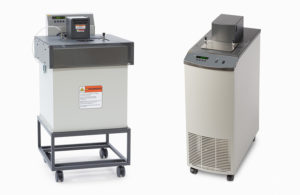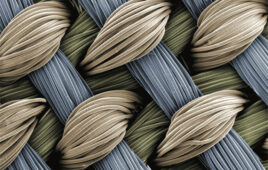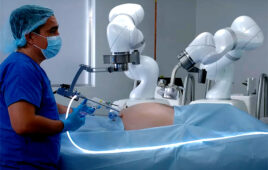Calibration baths, like salt baths, were originally for calibrating temperature assets. But there’s another use for them: manufacturing Nitinol medical devices.
Travis Porter, Fluke Calibration

The Fluke Calibration 6050H Extremely High Temperature Calibration Salt Bath (left) can handle high temperatures (550 °C) with stability (±0.002 °C) and uniformity (±0.005 °C). The Fluke Calibration 6331 Deep-Well Compact Bath (right) can handle both high (300 °C) and low (-80°C) temperature with excellent stability (±0.005 °C) and uniformity (±0.007 °C). [Images courtesy of Fluke Calibration]
The precise heating and quenching of these forms are what allows for the shape memory to be locked into the Nitinol for use. Offering a manufacturing facility more control over their proprietary process can help shape the devices without fear of breakage or disforming from their initial cast design.
Picture blood clot filters or stents folded up and inserted into a catheter. A health provider guides the catheter during the insertion procedure, following twists and natural paths through the body. Because the device is compacted, it can travel without damage to the individual or the implant. Once in place, the patient’s natural body temperature causes the device to return to its original cast shape/size.
Nitinol tempering process
The general medical device quenching and tempering process involves heating a Nitinol wire to incredibly high temperatures, then quenched to create the shape memory. The formula, temperatures and timing can differ from company to company, but the overall process remains the same.
That also means each company is taking the steps, refining their processes, and striving for a process that remains consistent and repeatable. The result is to have as little deviation as possible from one device to the next during the manufacturing process. Having a developed process that is repeatable with consistent results and creates uniform, high-quality pieces is paramount in the medical device manufacturing industry. It can help cut down on quality control issues down the line.
Using a salt bath for tempering and forming
When it comes to the tempering process for Nitinol, a salt bath system can maintain temperatures at a more stable and uniform rate. Ensuring an exact environment each step of the way — and a consistent and repeatable process — makes salt baths a great advancement for the medical device manufacturing field.
A salt bath provides stability and uniformity specifications that are up to 10 times more precise than a typical heat-treating bath. The precision allows manufacturing companies to create a consistent and repeatable method for heat treating, tempering and quenching the metal alloy. As a result, some have seen increased quality control and optimized workflows using a salt bath during the wire forming process.
Temperature precision
A temperature calibration salt bath can be set to exact temperatures, creating a highly controllable process. Because salt baths are designed for calibration, the temperature inside is also precise for both the heating and cooling steps necessary for the tempering process. For example, some baths offer +/-1.0 °C over the range of 180-550 °C. Setting the temperature while heating — and inducing 1,000 W of boost heating during the initial quench of the wire forming process — helps create precision while also being easily repeatable, netting a better-quality product and possibly lowering risk due to a manufacturing deviation.
Stability and uniformity
A high-quality salt bath can offer a maximum temperature of 550 °C, allowing the temperature to be held consistently within a ±0.008 °C and hold uniform (top to bottom/side to side) temperature within ±0.002 °C deviation. The consistency creates a level of certainty for the manufacturer that allows manipulating a best-case environment for the heat-treating of Nitinol devices. In turn, that can lead to a better-quality product with fewer quality control issues between devices.
Versatility
Salt baths come in a variety of specifications. Whether you’re looking for a specific temperature range, fluid type, size, or shape, there are a wide variety of specifications to choose. Many calibration bath manufacturers are even able to customize to specific needs. Depending on your specification choices, selecting a salt bath can offer a temperature range from 180°C to 550 °C for your tempering and quenching process.
Travis Porter has spent nearly 22 years as a temperature calibration expert with Fluke Calibration and the former Hart Scientific. He has held a variety of roles, including technical support, manufacturing, and sales. He is currently an inside sales account manager for Fluke Calibration.
The opinions expressed in this blog post are the author’s only and do not necessarily reflect those of MedicalDesignandOutsourcing.com or its employees.




